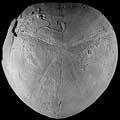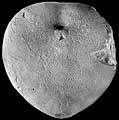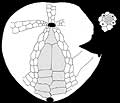The Echinoid Directory
Mokotibaster Lambert, 1933, p. 17
| Diagnostic Features |
|
|---|---|
| Distribution | Upper Cretaceous (Maastrichtian), Madagascar. |
| Name gender | masculine |
| Type | Mokotibaster hourcqui, Lambert, 1933, p. 17, by original designation. |
| Species Included |
|
| Classification and/or Status |
|
| Remarks |
|




